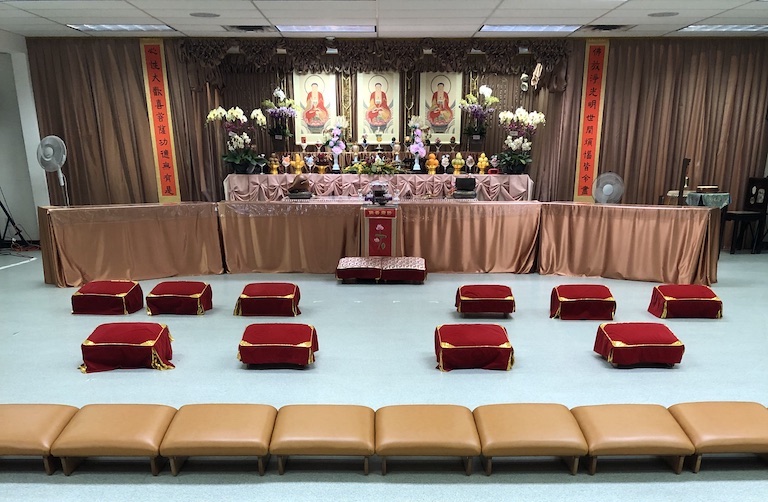Durgesh Kasbekar
Durgesh Kasbekar is an Executive Committee member of the Religion in International Relations Section, International Studies Association (ISA).
Canadian Buddhism – a possibility of a dialect if not a language
Over decades, several Canadian scholars have contributed to the local and global study of Buddhism. Three remarkable Canadian intellectuals who contributed to Buddhism’s intellectual and academic growth in North America and beyond stand out as pioneers:
- Richard Robinson, a Canadian, founded the first program in Buddhism in the US at University of Wisconsin-Madison. He was introduced to Shin Buddhism at a temple in Raymond, Alberta.
- Masatoshi Nagatomi founded the second Buddhist studies program in the US at Harvard University was associated with the same temple. His father Reverend Shingo Nagatomi was a minister at the same temple.
- The third would be Dr. Leslie Kawamura who established the Numata Chair of Buddhist Studies at the University of Calgary.
During his illustrious career, Kawamura founded the following organizations and/or served in an executive role during their formative periods: The International Association of Buddhist Studies, the North American Association for Buddhist Studies, the Canada Mongolia Society, the Society for Tibetan Studies in Alberta, the International Association of Shin Buddhist Studies, and the Buddhism Section of the American Academy of Religion. The University of Calgary awarded him the President’s Award for Internationalization in 2004 and the Order of the University of Calgary in 2010. Among the three, only Robinson was not from a ministerial background (Harding, 2014).
Corresponding to similar claims of an “American Buddhism”, there is a possibility in Canada whether a form of emerging Buddhism expressing national cultural particularities could be called as “Canadian Buddhism”. Alexander Soucy- an expert on Buddhism in Canada says that the developments in Canada are not specifically Canadian but more of a global phenomenon. No scholar has specifically made a direct claim for a Canadian Buddhism, although Jeff Wilson makes a call for scholars to search for it paralleling a sustained claim for American Buddhism.
Although there is a distinction between “Buddhism in America” and “American Buddhism”, Wilson suggests that Canadian Buddhism is perhaps more like a local idiom or accent than a completely different language. Soucy points out that although Wilson explicitly suggests that there are five areas where we could search for Canadian Buddhism viz-a-viz laws and policies, history, landscape, society and culture and international connections, neither he nor any other scholar makes a direct claim of a “Canadian Buddhism” (Soucy, 2014). Soucy, in turn, says that the characteristics associated with “American” or “Canadian” Buddhism have been falsely attributed to the West and makes a compelling case that monks in Canada and elsewhere were influenced by globalist ideas & international outlook before they left their home countries for the West (Soucy, 2014). He says that these transformations are rooted in 19th century Asian Buddhist reform movements, which came about as responses to colonial hegemony and pressures from Christian missionaries (Soucy, 2014).
However, I humbly, aim to seek a middle ground between these divergent views. I feel that as years go by, Christianity’s decline combined with the rise of “unaffiliated” or “non-religious” adherents (some of whom may be non-assertive Buddhists), conversions to Buddhism and increased migration of Buddhists from South, South-East and East Asia to Canada may collectively result in a local idiom or an accent evolving into a distinct dialect if not a new language. That, possibly, could be the future of Canadian Buddhism.
References
Beauchamp, Z. (2016). Canada is a huge country. Most of it unfit for habitation. Retrieved https://www.vox.com/2016/5/5/11584064/canada-population-map
Harding, J. (2014). Leslie Kawamura: Nothing to add, nothing to take away. In Flowers on the Rock: Global and Local Buddhism in Canada-Edited by Harding. J, Hori, V.S. and Soucy, A. McGill- Queen’s University Press
Pew Research Center (2004). Americans and Canadians. Retrieved https://www.pewresearch.org/global/2004/01/14/americans-and-canadians/
Soucy, A. (2014). Buddhist Globalism & Canadian Buddhism. In Flowers on the Rock: Global and Local Buddhism in Canada-Edited by Harding. J, Hori, V.S. and Soucy, A. McGill- Queen’s University Press
Statistics Canada (2016). The demographic picture varies by province or territory. Retrieved https://www.canada.ca/en/canadian-heritage/services/official-languages-bilingualism/publications/statistics.html
The Association of Religion Data Archives (2022). First Buddhist Temples Built- Timeline Event. Retrieved https://www.thearda.com/us-religion/history/timelines/entry/?etype=1&eid=354
The Canadian Encyclopedia (2022). Buddhism in Canada. Retrieved from https://www.thecanadianencyclopedia.ca/en/article/buddhism
U.S. Census Bureau (2021). Quick facts: United States. Retrieved https://www.census.gov/quickfacts/fact/table/US/PST045219
Waugh, B. (2011). Canadians and Americans are more similar than assumed. Retrieved https://news.ubc.ca/2011/07/07/canadians-and-americans-are-more-similar-than-assumed/
WGBH Educational Foundation (1993). Video titled, “Becoming the Buddha in L.A.”


